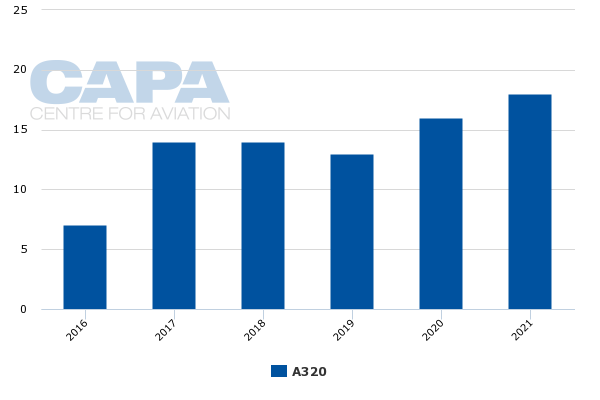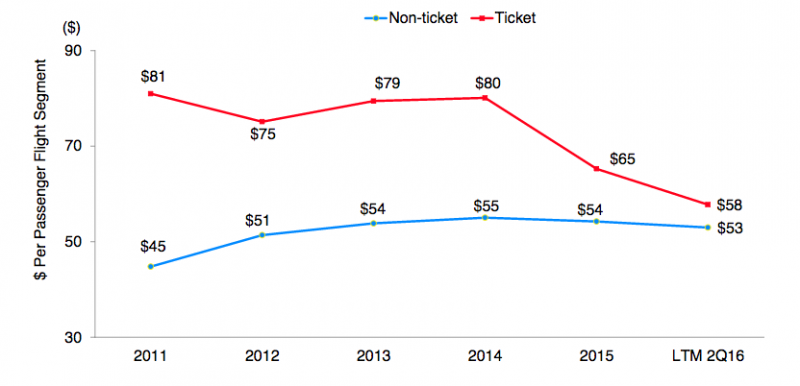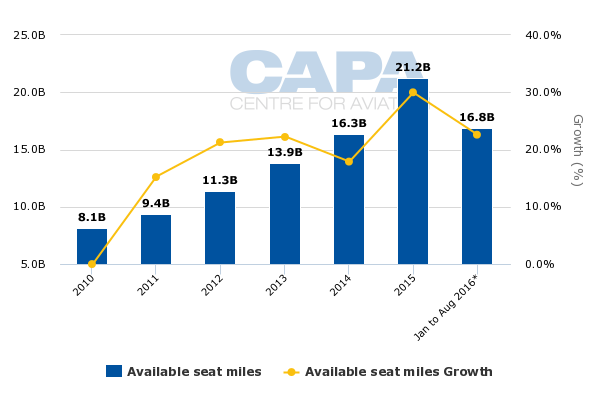Spirit Airlines: touting solid financial position, but investors stay laser-focused on unit revenue
During the past year investor attention has pivoted away from Spirit's steady balance sheet and strong cost base to the company's deteriorating unit revenue - a scenario most US airlines find themselves dealing with as a result of lower fuel costs driving up capacity and eroding pricing traction.
Growing cash balances and sustaining favourable leverage remain crucial elements of Spirit's business strategy. Keeping a stable cash position allows the airline to fund its higher than average growth, which continues to deliver strong margins according to Spirit's argument.
Its industry-leading cost performance is key to Spirit's ability to sustain solid margins even as the US revenue environment remains weak. Although it faces some cost inflation in 2016, the airline remains focused on sustaining one of the best cost performances in the US airline business.
Spirit maintains healthy leverage ratios and builds cash to support its growth
Spirit's leverage peaked at 1.81x in 2011, and settled to 1.35x for both 2015 and the 12M trailing 2Q2016. Maintaining those steady leverage ratios is important for Spirit along with increasing its liquidity, company CFO Ted Christie recently explained to investors.
Spirit's adjusted net debt to EBITDAR 2011 to LTM2Q2016
| 2011 | 1.701x |
| 2012 | 1.81x |
| 2013 | 1.36x |
| 2014 | 1.32x |
| 2015 | 1.35x |
| LTM2Q2016 | 1.35x |
Spirit's trailing 12M cash balance increased from USD343 million in 2011 to USD1 billion for 2Q2016, and at that time its cash reserves represented 45% of its 12M revenue.
Increasing cash balances is important for a company of Spirit's size, Mr Christie said.Spirit believes it is prudent to have some sort of buffer in the airline industry - as insulation from shocks to the business that crop up from time to time.
Spirit also needs a stronger cash position to ensure it has adequate capital to handle the airline's planned growth for the next several years, which includes an aircraft order book of 82 Airbus narrowbodies.
Spirit Airlines fleet summary as of 9-Oct-2016
| Aircraft | In Service | Inactive | On Order* |
|---|---|---|---|
| Total: | 89 | 0 | 82 |
| Airbus A319-100 | 29 | 0 | 0 |
| Airbus A320-200 | 45 | 0 | 10 |
| Airbus A320-200neo | 0 | 0 | 55 |
| Airbus A321-200 | 15 | 0 | 17 |
CAPA's fleet database shows that Spirit is scheduled to take delivery of 14 aircraft in both 2017 and 2018; then 13 in 2019, 16 in 2020 and 18 in 2021.
Spirit Airlines projected delivery dates for aircraft purchased from OEMs and leased from lessors as of 9-Oct-2015

Spirit concludes stable non-ticket revenue helps to offset lower ticket prices
Spirit's ASM growth peaked at 30% in 2015 when revenue dynamics in the US domestic environment soured and investors put a laser focus on the industry's passenger unit revenue performance.
Spirit's unit revenue declines have been deeper than those of most airlines. Its total unit revenue decline for 1Q2016 was 13.8%, and its average ticket revenue per flight segment fell 20.5%. For 2Q2016 Spirit's total unit revenue fell 14.3%, and average ticket revenue per flight segment declined 22.6%.
See related report: Spirit Airlines feels sting of Southwest's discounting. First signs emerge of changing network mix
The non-ticket components of sales represent almost 50% of Spirit's revenue, said Mr Christie.
He pointed out that while Spirit's ticket revenue per flight segment fell from USD81 in 2011 to USD58 for the 12M ending 2Q2016, its non-ticket revenue remained fairly stable, dropping just USD1 between 2015 and the 12M ending 2Q2016.
Spirit non-ticket and ticket revenue per passenger flight segment: 2011 to LTM2Q2016

During 1Q2016 Spirit's non-ticket revenue fell 3.7% year-on-year, and the company stated that the compression was driven by what it deemed as modest pressure on take-up rates for certain ancillary items, including bag and change fees. Spirit concluded that the pressure was correlated with lower fares in its markets.
In the past Spirit has engaged in some dynamic pricing of ancillaries, and the company has previously stated that it planned to use optimised pricing of its non-ticket items as one tool to drive USD1 to USD2 in additional non-ticket revenue per flight segment.
See related report: Pricing pressure not on Spirit's non-ticket revenues. Falling oil prices test the ULCC model
Spirit maintains it continues to deliver a solid performance at 15-20% growth rates
Just as Spirit's ticket revenue tumbled in 2015 - dropping 18.5% for the full year - its annual growth rate measured by ASM expansion reached 30%. The combination of negative unit revenue growth and robust capacity expansion spooked investors, and its stock price fell from USD84 in Dec-2014 to USD47 at the beginning of Oct-2015.
Spirit Airlines annual available seat miles: 2010 to Aug-2016

See related report: Spirit Airlines' expansion and unit revenue declines concern Wall Street, but are central to the model
Spirit's growth rate in 2016 will fall back into the 15% to 20% range that the company is forecasting for the foreseeable future. Mr Christie admitted Spirit's expansion levels were high for the US airline business, but argued that as it had grown at that rate, or higher, its balance sheet had continued to strengthen; further, as long as its fundamentals remained intact, and Spirit delivered the returns to shareholders they expect, the company's strategy would be attractive for the long term.
The airline has not been overly aggressive with share buy-backs. It initiated a USD100 million share buy-back in late 2014, but also needs to ensure that it attains enough capital to fund its growth. Spirit's return on invested capital (ROIC) reached a peak of 31.8% in 2013, and was 27.6% for the 12M ending 2Q2016.
Its adjusted operating margin increased from 19.2% in 2014 to 23.7% in 2015. At some point Spirit may need to contemplate further shareholder returns, since investors are increasingly becoming more vocal about returns amid recoveries to record airline profitability. The company's net profit jumped nearly 41% year-on-year in 2015, to USD317 million.
Spirit works to mitigate cost pressure in order to maintain a crucial cost advantage
One key element that drives Spirit's balance sheet strength and enables the company to expand at such a high rate is its cost performance. For FY2015, Spirit's unit costs excluding fuel and special items dropped 6.5% to USD5.50 cents. A recent report by CAPA calculated that Spirit's all-in CASK adjusted for its average trip length fell 20% year-on-year in 2015.
See related report: Spirit Airlines, Allegiant Air, face cost pressure in 2016; reduced fuel costs drove stellar 2015
Spirit has calculated that its cost advantage against many US airlines has grown during the past four years. Southwest's adjusted unit costs were 38% higher than Spirit's for the 12M ending 2Q2016, versus a 16% gap in 2012. Based on schedules for Jun-2016, Spirit's network overlap with Southwest was 54%; its highest overlap was with American, at 54%.
Many factors drive Spirit's cost performance, including high aircraft utilisation, operating more dense aircraft, and optimising variable components of its cost structure, said Mr Christie. For example, when Spirit enters a new market it tends to focus more on variable cost rates than fixed expenses until the company determines the market will be viable, said Mr Christie.
Spirit is facing some cost pressure in 2016, forecasting flat unit cost growth excluding fuel and special items, driven largely by maintenance costs. The company is also facing some cost inflation in the future as it adds shorter-haul markets to its network mix. The airline projects the highest quarterly unit cost increase of 2016 should occur in 4Q, when its unit costs (excluding fuel) are set to grow in the high single digits. The airline anticipates that lower aircraft rent per available seat mile should offset some of its maintenance cost pressure.
A flat cost performance in 2016 would still place Spirit in a favourable cost position versus its low cost peers and the higher-cost large global network airlines. But obviously over the long term Spirit's goal is to keep driving its costs down, in order to sustain its growth rate and continue to build balance sheet strength.
Despite Spirit's strong financial fundamentals, investors seek a revenue inflection point
Arguably, Spirit's solid financial fundamentals have remained intact during the past year as its unit revenue performance has eroded some of the airline's share price valuation. In early Oct-2016 the airline's USD42 trading price was nearly half of its valuation in Dec-2015, but up from lows of USD37 in Sep-2016.
The unit revenue environment within the US does not seem to be deteriorating any further, which is a welcome sign for Spirit and the industry at large. Although Spirit itself continues to deliver solid profits and margins, investors for now are still searching for an inflection point for the industry's unit revenue declines.